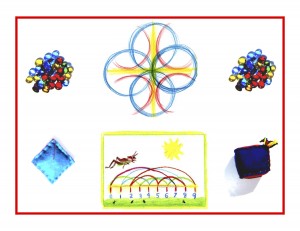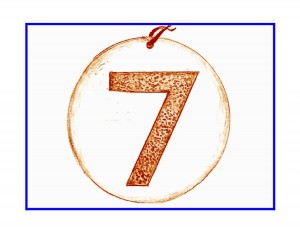Day 83
For one year, 365 days, this blog will address the Common Core Standards from the perspective of creating an alternate, ambient learning environment for math. Ambient is defined as “existing or present on all sides, an all-encompassing atmosphere.” And ambient music is defined as: “Quiet and relaxing with melodies that repeat many times.”
Why ambient? A math teaching style that’s whole and all encompassing, with themes that repeat many times through the years, is most likely to be effective and successful. Because the Common Core Grade 1 Math Standards address addition and subtraction exclusively, they will appear here later, in conjunction with the blocks that focus on the 4 processes. Earlier math blocks focus on meeting the numbers up close and personal through stories, movement, art, form drawing, and hands-on activities like making real numbers. The numbers should come together for calculation only after an in-depth introduction has established them as friendly and personable, so essential for circumventing math fears and phobias!
The second math block should focus on making real numbers. Why? Our base-ten, Arabic numeral system is simple to grasp; there are only 10 number forms to learn, 0-9. These numbers however, have little to no correlation to their visual appearance, as the Roman numerals do. Since they’re more abstract in that way, learning and writing them can be challenging. For this reason, sculpting or forming the numbers by hand can be very helpful, and there are many ways to do this.
One fun way is to construct sandpaper numbers and use them both to learn the number forms and for 4 processes practice later on.
1) Trace the numbers 0 – 9 onto heavy paper or cardstock, using large (at least 4 – 5” inches tall) number stencils, or draw them freehand.
2) Carefully cut each one out, then flip them right-side up and backwards.
3) Trace the reversed numbers onto the back of medium grain sandpaper sheets and cut them out.
4) Center and glue each number onto a paper plate (Chinet is a good brand to use).
5) Trim the outside edge off the plate, so it resembles a frisbee.
6) Mark the center top of the plate to indicate correct placement. You could also punch a hole and thread a yarn or string loop through, as shown in the picture below.
This is similar to a Montessori technique used for tactilely experiencing number and letter forms. Make two or three of each number and use them for 4 processes practice! (You may want to add the sandpaper five operations signs for this as well.)
Knowledge ensues in an environment dedicated to imaginative, creative knowing, where student and teacher alike surrender to the ensuing of that knowledge as a worthy goal. More real numbers tomorrow. Tune in!













